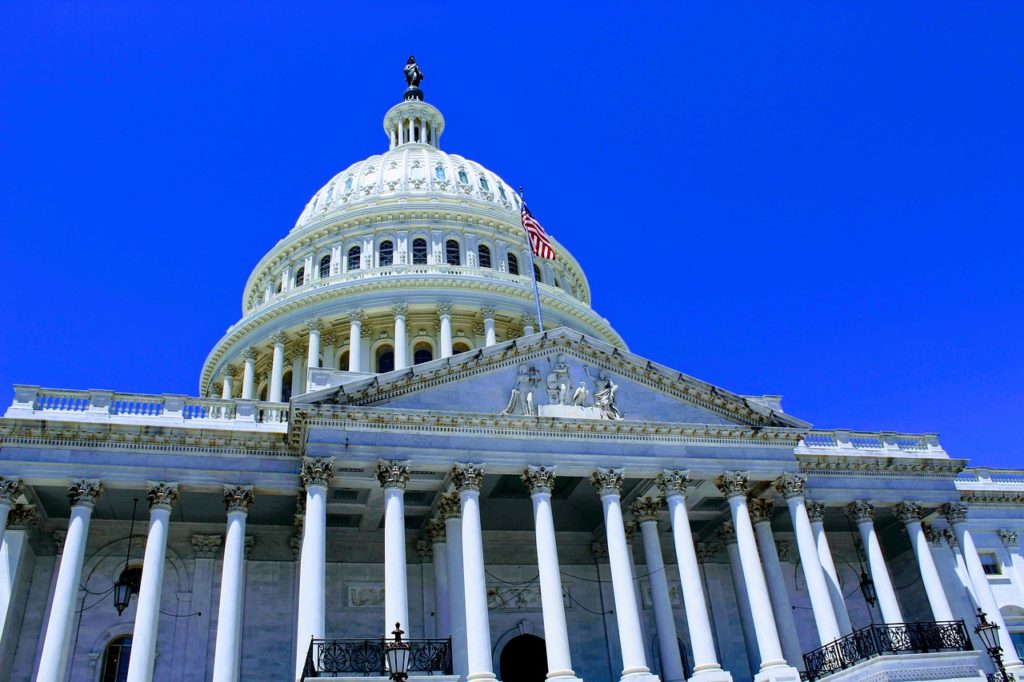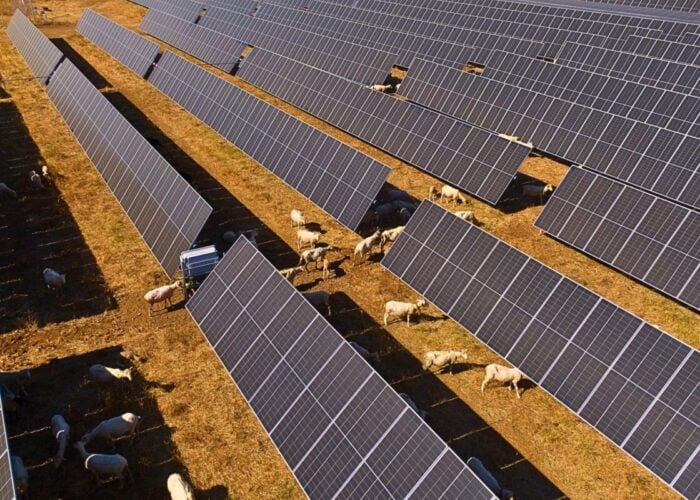
First Solar CEO Mark Widmar has said that the US solar manufacturing industry “remains in a precarious position, despite the passage of the Inflation Reduction Act (IRA)”.
Giving evidence in a US Senate Finance Committee hearing yesterday, the CEO of cadmium telluride (CdTe) thin-film solar manufacturer First Solar emphasised the importance of effective trade protections, to ensure that the stimulatory tax credits in the IRA have long-lasting effects for the solar manufacturing industry.
Unlock unlimited access for 12 whole months of distinctive global analysis
Photovoltaics International is now included.
- Regular insight and analysis of the industry’s biggest developments
- In-depth interviews with the industry’s leading figures
- Unlimited digital access to the PV Tech Power journal catalogue
- Unlimited digital access to the Photovoltaics International journal catalogue
- Access to more than 1,000 technical papers
- Discounts on Solar Media’s portfolio of events, in-person and virtual
“It is the anticipated durability and scale of the IRA that has the potential to truly deliver the re-shoring of a resilient US solar supply chain,” he said. “More simply stated: the US tax code has the power to incentivise domestic investment in significantly growing this industry, but the ability of those investments to endure is enabled by a corresponding trade policy.”
Given the dominance of Chinese companies in the global solar manufacturing space and the overwhelming concentration of silicon-based solar supply in China – made possible by what Widmar called “an opaque system of subsidies” – the US needs to support domestic producers, he said.
Widmar said that there are currently “no restrictions in place” preventing Chinese solar manufacturers – or what he called “companies controlled by, owned by, or subject to the jurisdiction of the Chinese government” – from benefitting from US tax breaks under the IRA.
“We cannot line China’s pockets with US taxpayer dollars,” he said, warning that it was “not unrealistic” that Chinese manufacturers’ announced facilities would “disappear once the 45X tax credits expire and American taxpayer dollars are extracted”.
A number of major solar manufacturers have announced capacity expansion plans in the US, notably Canadian Solar, JA Solar and Korean-owned Hanwha Qcells.
Not yet “proper trade enforcement”
The US has trade restrictions in place on China already – most notably the Uyghur Forced Labor Prevention Act (UFLPA) and the anti-dumping/countervailing duty (AD/CVD) tariffs.
The latter is due to come into force this summer after President Biden introduced a waiver of two years to give the domestic solar industry a “bridge” to shield itself from the tidal waves of predicted disruption the tariffs would induce. The tariffs themselves refer to the circumvention of US trade law by a number of Chinese-owned solar manufacturers, five of which were found guilty of relocating portions of their operations to Southeast Asia for “minor processing”.
The AD/CVD case was brought to the US Department of Commerce by Auxin Solar, a small California-based solar manufacturer. Members of the US solar industry have previously expressed criticism of the case and questioned Auxin’s motives and backers.
The UFLPA, for its part, has proved a more effective instrument and resulted in around 2GW of modules held at US customs in 2022 awaiting proof that their supply chains are free from exposure to forced labour. But even the efficacy of the UFLPA was called into question in a February report from polysilicon market analyst Bernreuter Research, which claimed that shipments of polysilicon from China to Southeast Asia (where the majority of modules that end up in the US are made) increased 700% from 2022 to 2023. This “Should sound alarm bells” at US Customs, the organisation’s founder said.
Referring to the AD/CVD tariffs at the Senate Finance Committee hearing, Widmar was disparaging. He said: “As things stand, we are at risk of adding Ohio, Texas, Arizona, and other US states to the list of locations that host China’s overseas final assembly facilities.
“Congress must ensure that the US does not become a de facto extension of China’s Belt and Road initiative, serving as a mere assembly outpost for China’s state-subsidised solar manufacturing industry, while paying for the privilege with US taxpayer dollars.”
First Solar itself is isolated from the silicon supply chain that dominates the solar industry by virtue of its CdTe technology. It is also the largest module producer in the US and has plans to expand its capacity significantly throughout this decade. Widmar said: “We invite competition, and we invite free trade; all we ask is that this competition and trade are practised on a level playing field.”
Domestic content and Section 45X
Not all of Widmar’s testimony was downbeat. He reserved particular praise for the IRA’s domestic content adder and Section 45X manufacturing credit, which he said could “drive the policy punch that has the power to reshore manufacturing”.
The domestic content adder is yet to be entirely clarified, but in order to receive its 10% tax credit a solar module would need to be produced with a minimum 40% of US-made content, calculated on a cost basis. This figure will rise to 55% in 2026.
The complication for solar manufacturers, as explained to PV Tech Premium by the CEO of Canadian manufacturer Heliene, is that the majority of the cost of a solar module comes from the cell. Widmar himself acknowledged in the Senate hearing that “not even one of the crystalline silicon panels installed [in 2023] was assembled with American-made solar cells”.
PV Tech published a guest piece by Clean Energy Associates (CEA) exploring the disparities in US solar capacity announcements between modules and further-upstream components.
However, if manufacturers could overcome this price obstacle, Widmar said that the domestic content adder could create a “durable market pull for solar produced via high-value domestic manufacturing”.
The Section 45X credit provides operational expenditure (OPEX) for solar manufacturing across much of the value chain, which Widmar said would allow US manufacturers to scale their operations effectively: “For solar manufacturing, the more watts produced, the greater the overall tax credit. As designed, the law encourages competitiveness at scale.”
It is arguable that First Solar is the company best-placed to benefit from both of these laws; its CdTe manufacturing does not rely on silicon solar cells, and its costs are easily covered by currently ill-defined “US-Made” components, and it has the largest manufacturing footprint in the US, making it best poised to benefit from Section 45X financing. Indeed, First Solar conducted what it called the ‘first’ transaction under Section 45X a few days after the Treasury released guidance for the law.







